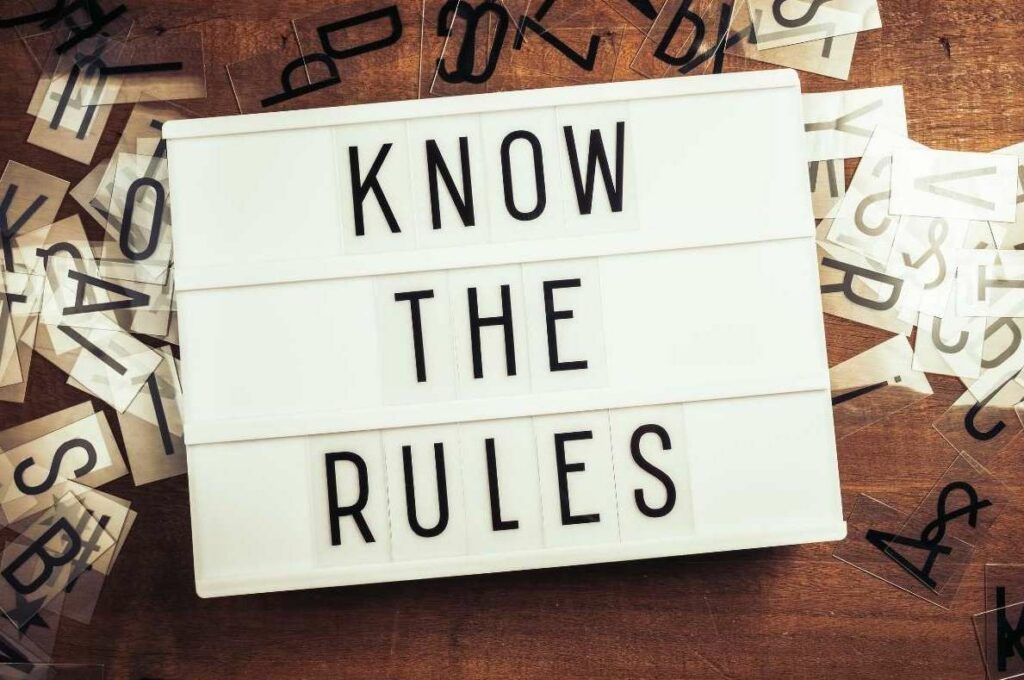There is no 16-move rule in formal chess. It is only applicable in informal chess matches, which are mostly known as street chess.
This post is pretty long unfortunately, and a bit dry due to the amount of rules and regulations I need to explain.

I am sorry about this, but the 16 move rule has popped up as a question quite a few times lately. I hope this article helps and, if not, it may at least help you to sleep!
Please feel free to leave any comments and feedback if you want anything changing or adding. So, here goes….
The 3 Outcomes in Chess
Any given chess match can end in one of three outcomes: a win, a loss, or a draw. Wins and losses are pretty easy to determine since they only occur after one player manages to checkmate their opponent’s king.

However, determining whether a draw has occurred can be a bit more complicated. According to the International Chess Federation (FIDE). The governing body for all professional chess tournaments, the globally accepted “draw rules” include:
- Stalemate: a stalemate occurs when the player whose turn it is has no legal moves left. This calls for an immediate draw since the game cannot progress any further.
- Threefold repetition: the player may call a draw after the same position has occurred three times during a match.
- Fivefold repetition: the arbiter calls a draw after the same position is repeated five times during a match.
- Impossible checkmates: it is impossible to checkmate another player’s king with a King and a Knight. So this situation also calls for a draw.
- Mutual agreement: both players can agree to call the game a draw when they deem an outright win impossible.
- The numbered stalemate rule: in many cases, draws are determined after a specific number of moves are played without a capture or the movement of a pawn.
The complicated bit is determining which numbered stalemate rule applies where. It is in this part of the game that you will encounter a few variations used to determine when a chess match is considered drawn.
Numbered Stalemate Rules
To that end, some of the numbered stalemate rules you may come across include:
- The 16-move rule
- The 50-move rule
- The 75-move rule
Before we go on any further, this is what you should know about numbered stalemate rules:
- In formal chess, there is no 16-move rule. This move was popularized in street chess tournaments for reasons we shall explore later in the article.
- The 50-move rule is the most common numbered stalemate rule used in chess. And it involves a mutual agreement by both players.
- The 75-move rule is another commonly used numbered stalemate rule. And it is usually enforced by an arbiter even if both players don’t agree to a draw.

About the 16-Move Rule in Chess
To reiterate, there is no 16-move rule in formal chess. Even though it adopts the same principles as other numbered stalemate rules. It is only applicable in informal chess matches, which are mostly known as street chess.
The 16-move rule describes how a game is automatically drawn if one player fails to capture their opponent’s lone king within 16 moves. The count only begins after one player loses all their pieces and pawns (save for the king).
The 16-move is widely accepted in street chess tournaments worldwide. Nevertheless, it is not included in any formally recognized international game regulation.
If you grew up playing street chess, it is understandable to think this rule applies to all chess matches. In reality, it is never used to call draws in formal tournaments.

Why is the 16-move rule used?
In formal chess, deciding the winner of any given match is the most important affair. However, street chess arbiters and players are more interested in keeping the game moving and the audience interested.
Games with few pieces on the board are not as interesting to watch. As such, the organizers prefer to limit the number of moves allowed to players after one side loses all the pieces.
For the count to start, one player must have only a king left. The count does not start if there are pawns or any other pieces left.
The 16 moves are considered over after each player gets a turn. Therefore, in this scenario, two moves, one from each player, are counted as one. In a way, the disadvantaged player only has the opportunity to draw after 32 moves have been played.

When does the 16-move rule come into effect?
For the 16-move count to begin, one player must remove all of their opponent’s pieces from the board except the king. This includes:
- All Pawns
- Both Knights
- Both Bishops
- Both Rooks
- The Queen
The king should be the only piece left on the board for this rule to take effect. The presence of even one pawn makes the count non-eligible, so the numbered stalemate rule cannot be applied.
That presents a loophole where it can be avoided altogether if you (the losing side) retain an extra piece, even if it’s just a pawn.

The problem with the 16-move rule
The reason this rule doesn’t feature in formal games – and why most chess players steer clear of it – is because it is very difficult to accomplish a checkmate with limited pieces in just 16 moves.
In many cases, most games that end in a draw because of this rule can be finished successfully if a few more moves are added. Thus, it can feel very limiting and take away from your endgame. Most players cannot finish a game within 16 moves. Especially if it’s tightly contested to the point of leaving only a few pieces on the board.

To illustrate, these are some combinations that can successfully checkmate an opponent’s king but may fail due to the 16-move rule (both kings are present in all scenarios):
- Queen against knight
- Rook, bishop, and knight against bishop
- Rook against bishop
- Two rooks against a bishop
- Two knights and a pawn against a lone king
- Two rooks against two knights
In all these scenarios, the attacking player may fail to capture their opponent’s king due to the very limiting nature of the 16-move rule. Nevertheless, all these endgame scenarios are winnable given enough moves so that drawing might feel unfair to the attacking player.
When the 16-move rule applies
The only time the 16-move rule is used to determine a draw is during street chess matches. Don’t expect to apply this rule in any formal tournament, as it is widely considered informal.
In formal matches, a draw is more likely determined by one of the following numbered stalemate rules:
- The 50-move rule
- The 75-move rule
Bear in mind that any numbered stalemate rule lower than the 16-move rule is considered extremely arbitrary and shouldn’t be used as a draw rule in any chess tournament, formal or otherwise.

You may come across the 15, 14, 13, or even 12-move rule while playing street chess. In many cases, these highly informal regulations are rarely used outside of friendly, loosely-governed matches. And they serve no purpose other than preventing drawn-out exchanges to keep matches short and entertaining.
About the 50-Move Rule in Chess
The 50-move draw rule is one of chess’s widely accepted numbered stalemate rules. It states that the game can be drawn when both players fail to move or capture any pieces or pawns in 50 moves.
However, should one player move a pawn or capture their opponent’s piece before 50 moves are up, the count resets. Unlike the 16-move count, which only begins after one player loses all their pieces except the king. The 50-move count begins from the moment the game starts.
Should both players fail to capture their opponent’s piece or even move a pawn in 50 moves, they each have the opportunity to call a draw. As such, this 50-move stalemate may occur at any point of the game, including the opening and middle games.

Why the 50-move rule is popular
The 50-count stalemate applies to all formal games and tournaments because it is established by FIDE regulations. This is the main governing body in chess tournaments. As such, most countries around the world recognize this as a fully legal numbered stalemate rule.
According to the FIDE handbook, rule 9.3.2, the 50-move rule takes effect after completing 50 moves without a capture or pawn movement. If neither player captures their opponent’s piece or moves a pawn in 50 moves, the game can legally be drawn should any of the players choose to call it a stalemate.
Remember that the decision has to be made by one of the participating players for the rule to take effect. This is important because it distinguishes the 50-move rule from the 75-move rule, which we’ll discuss later.

How is the 50-move rule different from the 16-move rule?
There are a number of reasons why the 50-move stalemate rule is very different from the 16-move:
- The 50-move rule doesn’t take into consideration the number of pieces available on the board. If no capture happens, and if no pawn moves within 50 moves, the game is eligible for a draw.
- The 50-move rule begins at the start of the game, unlike the 16-move rule, which only begins after one player loses all their pieces except the king.
- Any pawn movement or capture immediately resets the 50-move rule.
- The count starts from the last turn, where a piece is taken off the board or a pawn moves.
- There are no limits on how many times the 50-move count can be reset.
- The 50-move rule is widely recognized in formal chess tournaments as a legal numbered stalemate rule. The 16-move rule is mostly used informally in street chess matches.
The 50-move rule is designed to give enough moves for a legal checkmate but still prevent the game from deteriorating into an unwinnable scenario. However, it still suffers a flaw because the draw is only enforceable once a player decides to call a stalemate after 50 moves are played without a capture or pawn movement.
What happens if both players can’t checkmate their opponent’s king after 50 moves yet refuse to honor the rule?
That’s where the 75-move rule comes into effect.

About the 75-Move Rule in Chess
The 75-move stalemate rule occurs when both players fail to capture a piece or move a pawn in 75 moves. This numbered stalemate rule is also legally recognized by FIDE regulations.
According to the FIDE handbook, rule 9.6.2, a draw is enforceable on any game after a series of 75 moves are played without a capture or pawn movement. Unlike the 50-move rule, this rule is enforceable by a third-party arbiter to prevent a situation where both players refuse to honor it and make moves simply to run down their opponent’s time.
While 16 moves may not be enough to perform a successful checkmate with limited pieces, 50 moves are plenty, and 75 are usually more than enough. Theoretically, any player can win a game in 75 moves regardless of the positioning and number of pieces they have left.

However, in cases where this is not enough, the arbiter has to step in and enforce a draw, provided the terms for the 75-move stalemate rule have been met.
Like the 16-move rule, one move is actually equal to two – one for each player. Therefore, it is more of a 75-turn rule than a 75-move rule. The count begins from the last move after a pawn advances or a player captures their opponent’s piece.
Once the 75 moves have been played to completion, the game automatically ends in a stalemate regardless of the sentiments of each player. This is to ensure that even the most extended chess matches eventually come to an end whether the players agree or not.
The 75-move rule can be canceled out when:
- The terms are not met – There must be at least 75 moves without a capture or pawn movement for this rule to take effect.
- The last move ends in a checkmate – If one player manages to checkmate their opponent at any given time during the 75-move count, the game ends in a customary win/loss.
- A player decides to enforce the 50-move rule. If, after 50 moves, one player decides to end the match in a draw, then the 75-move rule ceases to apply, and the match ends immediately.
Why is the 75-move rule important?
The consensus is that the 75-move rule is designed so organizers and arbiters can conduct smooth tournaments without overly stretched, dull matches.
It gives a finite playing limit that ensures every chess match ends in a timely fashion regardless of the players’ feelings and sentiments.

How the 75-move rule compares to the 50-move rule
The main difference between the 50-move rule and the 75-move stalemate rule is that the former can be invoked by a player, whereas the latter is enforced by an organizer/arbiter.
In the 75-move rule, the players don’t have much control over when it can be enforced. Once the arbiter establishes that the terms of stalemate have been met, they can enforce a draw and end a match without the permission or agreement of the players in question.
Nevertheless, the two stalemate rules share some important similarities. For instance, both counts begin following the last move after a pawn moves or a piece is captured. That means it can take effect at any point, including during the opening and the middle game.
Moreover, both rules can be reset once a pawn advances or an opponent captures a piece. You can also cancel out both stalemate rules at any point by checkmating your opponent’s king.

How the 75-move rule compares to the 16-move rule
Surprisingly, the 75-move rule shares a key similarity with the 16-move rule. In both cases, the rules are enforced by an arbiter once the terms of the stalemate rule are met, regardless of whether the players want to play on or not.
That’s about as far as the similarities go, however. The 75-move rule does not begin after a specific amount of pieces are left on the board, which is often the trigger for the 16-move rule to take effect.

Furthermore, you can cancel out the 75-move rule by capturing a piece or moving a pawn, whereas the only way to cancel out the 16-move rule is by checkmating your opponent’s king.
Bottom Line
The 16-move rule is not an officially recognized stalemate rule in chess. You will only encounter it in street chess and other informal match settings.
Nevertheless, it is a numbered stalemate rule, or in other words, a condition that must be met for a chess match to be considered a draw.

It is not formally recognized because it greatly limits your opportunities to checkmate your opponent if you have limited pieces on the board.
You’re better off familiarizing yourself with the 50-move and 75-move draw rules, which are officially recognized by chess’s governing body FIDE.
Thank you and well done for making it to the end! Jenna.

- Is Chess.com Premium Worth It? - May 25, 2023
- How To Set Traps In Chess? - May 25, 2023
- Chess.com Review - May 25, 2023

Hi Jenna — Congratulations, you have a very nice website! I just wanted to correct a few things you mentioned in discussing the 50, 75 (and 16 move draw rule). These are not stalemate rules as you call them in your otherwise very well written piece. They are called 50 and 75 move draw rules. Both the 50 and 75 draw rule have nothing to do with stalemate. Stalemate is a completely different draw rule where, as you noted, the player is not in check and does not have a legal move. Also at one point in the article you say both players have to mutually agree to the 50 move draw rule. That is not true — only one person needs to claim the draw based on the 50 move rule.
Finally, I’ve been playing tournament chess and blitz chess for over 20+ years in California and New York City (the home of street chess some might say), and I had never heard of the 16 move draw rule. If there was such a rule recognized here, a NYC street chess hustler would have certainly brought it up (but only if they were losing). After a little research, this 16 move draw rule seems to be recognized in the Philippines, maybe some parts of India, and perhaps a few other locales. But it’s certainly not recognized “worldwide.” It’s an absurd “rule” that leads to absurd results (like a K+P or K+R being unable to mate a lone king). One thing that’s unclear in your article is you say the 16 move rule can only be claimed if one player has only a lone king, then you go on to give examples where it often takes more than 16 moves in certain endgames. But the examples you give include endings where the side with less material has more then a lone king.
IMHO the 16 move draw “rule” is a “rule”street chess hustlers concocted to save face or get out of paying up when they are clearly losing a game. Let’s hope this ridiculous contagion of a “rule” doesn’t spread beyond the confines of where it already is.
Best of luck to you with your chess and website!